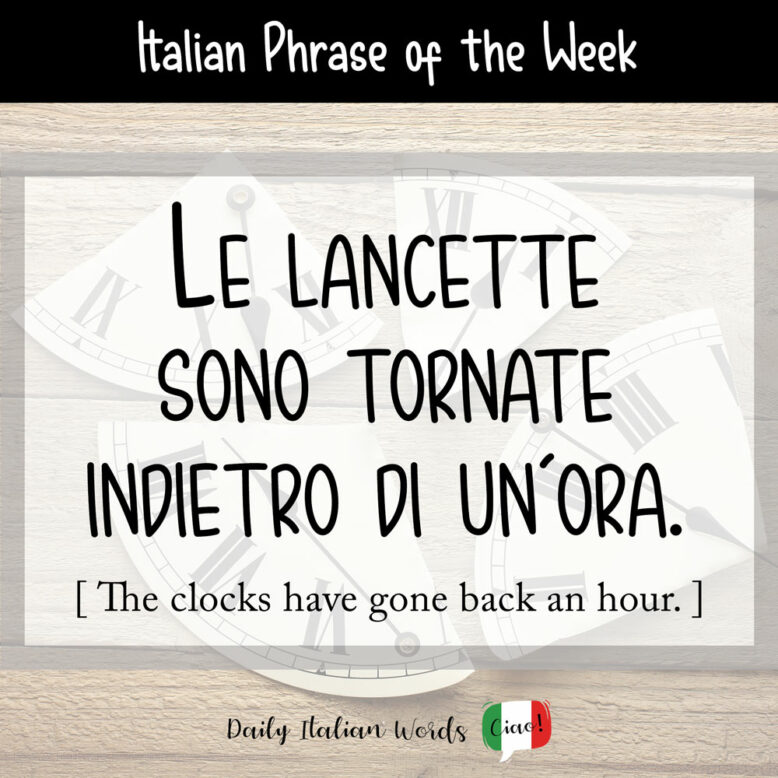In the USA and Canada, the changing of the clocks for winter time took place this past weekend. At 2 a.m. on Sunday November 6th, the clocks went back one hour, giving people one hour less of daylight in the evening but an extra hour in bed.

But did you know that in Italy, the clocks went back a week earlier? That’s right – in many locations in Europe, the switch from ora legale (Daylight Savings Time) to ora solare (the period when DST is not in force) happens on the last Sunday in October rather than the first Sunday in November.
The ora legale came into effect in Italy in 1966 as a measure to save energy but due to the negative effects on sleep and health, it remains controversial to this day.
In fact, this may even be one of the last years Italy partakes in the annual ritual. This is because in 2019, the European Parliament voted in favour of stopping the changing of the hour.

Although the phrase “The clocks have gone back one hour” may not be very useful in Italy in the years to come, it’s certainly worth learning now, so let’s take a look at how to say it in Italian:
Le lancette sono tornate indietro di un’ora.
The clocks have gone back an hour.
If we break the phrase down into smaller bitesized chunks, we can see that the translation is quite literal:
- le lancette (feminine, singular: lancetta) = the hands
- sono tornate = have returned / have gone back
- indietro = behind
- di un’ora = (by) an hour
Mentioning the movement of the lancette (hands) rather than the clock itself is a bit more common in Italian, but you can also say:
- Gli orologi sono tornati indietro di un’ora. = The clocks have gone back one hour.
- Le lancette dell’orologio sono tornate indietro di un’ora. = The hands of the clock have gone back one hour.
You can also use other verbs such as spostare (to move) or tirare (to pull):
- Gli orologi si sono spostati indietro di un’ora. = The clocks have moved back one hour.
- Le lancette dell’orologio si sono spostate indietro di un’ora. = The hands of the clock have moved back one hour.
- Le lancette dell’orologio sono state tirate indietro di un’ora. = The hands of the clock have been pulled back one hour.

If you want to say that the clocks have gone forward an hour, you can simply replace sono tornati/e indietro with sono stati/e spostate in avanti which means have been moved forward.
Le lancette sono state spostate in avanti di un’ora.
The clocks have been moved forward an hour.
We wrote these examples referring to the past because, by the time you read this article, the clocks will have already gone back. However you will certainly encounter this phrase before the change happens as well, in which case you’d use the future tense:
Questa notte le lancette dovranno essere spostate indietro di un’ora.
Tonight the hands of the clock will have to be moved back one hour.
In colloquial Italian, it is common to use what is known as presente pro futuro, meaning the use of the present tense to talk about something that will happen in the future. Therefore you can also say:
Questa notte le lancette devono essere spostate indietro di un’ora.
Tonight the hands must be moved back one hour.
Heather Broster is a graduate with honours in linguistics from the University of Western Ontario. She is an aspiring polyglot, proficient in English and Italian, as well as Japanese, Welsh, and French to varying degrees of fluency. Originally from Toronto, Heather has resided in various countries, notably Italy for a period of six years. Her primary focus lies in the fields of language acquisition, education, and bilingual instruction.


